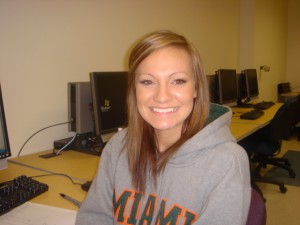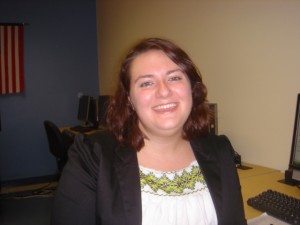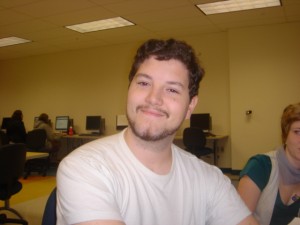I stood on the bridge of my ship, The Katana, wondering what it was exactly that I had just witnessed.
“Go to stealth!” I yelled out. There was little time for wondering now. The explosion of our partner ship, The Air Cutter, was still plainly visible. Of course, the explosion had no sound. The view, however, was persuasion enough.
Our sensor tech had the stealth come up within a minute, and my pilot moved the ship approximately 1,000 miles further away from where the Air Cutter once was.
“Scanners!” I yelled out, somewhat more calmly this time, but still with a firm voice. No need to freak out. “Any ships in the surrounding area?”
There was a slight pause. “Nothing, sir.”
I was still tense, but I tried to relax myself. Be in control. “Well, what hit them then? An asteroid? A lintar?” Lintars were natural phenomena; interstellar clouds made mostly of atomic energy. A sort of natural nuclear bomb. They were extremely rare, and we would have spotted them with our scanners long ago, but at this point I was simply trying to think of anything at all that could be responsible for the Air Cutter’s sudden explosion.
Another pause. “No, sir. We never detected any asteroids large enough to completely destroy the Air Cutter, nor do I see any evidence of a collision with an asteroid. As for the lintar…” he paused again. “…we would have detected them a while back.”
“Well, Barton,” I said, walking towards him, but keeping my eyes on the viewport. “What is out there?”
Yet again, another pause. “Just space, sir.”
I closed my eyes and ran my fingers through my hair, thinking of any other possible scenarios. System malfunction? Impossible. The two ships’ AIs were in constant communication. Any hiccups in the Air Cutter’s systems would have been immediately reported to The Katana’s AI, and our AI would have reported it to me just as quickly. It was standard operating procedure for partner ships, especially this far out in space. Just to be sure, I walked over to my screen and checked the communication history of the two AIs. Speed, altitude adjustment. Distance differentiation. Standard systems check. Then… nothing. According to the history, our AI had tried to reestablish contact. No such luck.
“Captain, come see this.” It was Barton again. I briskly walked up to his screen and took a look at what he pointing at. An image of a blurry, small spot was on it.
“One of our ship’s cameras was trained on the Air Cutter. If I can enhance the image…” He trailed off and continued typing some commands on his keypad. Suddenly, the Air Cutter was onscreen, in focus and much larger. “There! Now, let’s play it…”
The video ran for about ten seconds. It showed the ship flying through space, without a care in the world. Suddenly, it exploded with no warning. But… there was something strange about it. Barton played the video again, pausing it at the point of the explosion. There it was again. The front end of the ship looked rather odd. Almost as if…
“The Air Cutter was rammed into.” Barton stated matter-of-factly. “There’s no question about it. Look.” He pointed at the screen again. By now, everyone on the bridge had arrived at his desk and was staring at his computer screen. “Notice how, just prior to the explosion, the front end of the ship sort of caves in.” He was right. The Air Cutter’s front end was pushed back. Every other area of the ship seemed fine, but the front was completely crushed inward.
“It almost looks like a soda can being crushed,” stated Lewis, the navigator.
I continued staring at the screen frozen on the image. “But, this doesn’t make any sense: a ship in stealth did this? It can’t be an accidental collision: the odds are completely against it. Why would someone want to destroy an explorer’s vessel?”
“Maybe it wasn’t a ship,” offered Barton. “At least, not one with people on board. Maybe it’s a wall… or, some sort of large object…”
“This still doesn’t make any sense.” I repeated. Did we trespass on some alien territory or something? If so, why would they only attack one vessel? And why would they do so by ramming an invisible… something into it?
“Alright,” I said, after another long pause. “We need to go back to Pure II. Lewis, set our course.”
“But, Captain,” Lewis asked. “That thing is still out there somewhere.”
I looked over in his direction as I headed back to my quarters. “The only thing we are doing out here is making dumb guesses at something we have absolutely no knowledge of. I’m betting that the scientists back at base can shed some light on this. Our AI has this area’s coordinates, and I don’t think that whatever attacked the Air Cutter will be going after us anytime soon. Don’t worry; we’ll be fine.”
Pure II
Pure II was a military/scientific research base on one of the moons of a gas giant. It was the furthest human post from earth, nearly 150 lightyears away. We were actually sent to explore this area of space at the request of both the scientists and the military. For a good price, of course.
We arrived at the installation about three days later, due to hyperdrive malfunctions. Once we had landed, I headed straight to the commanding officer of the base, General Harkin.
“Ah, Captain, I’m glad to see you back.” Harkin was staring at a hologrid of what seemed to be a mining facility, probably from Pure III.
“General Harkin,” I said, shaking his hand. He was a somewhat older man, probably in his late 80’s, but his demeanor did not show it.
“I’m sorry to hear about the Air Cutter. We lost some good men.” His voice somewhat sank as he said this.
“Well, what’s done can’t be undone.” I stated simply. I did not personally know anyone from the Air Cutter, save the captain, and he and I did not get along very well. I did not dare say that, of course. “Do you or the scientists here know anything about this… situation? We’re at a loss here.”
There was another slight pause, and I began wondering how many more of those I would hear in the future.
“There have been reports of ships… crashing I guess you can say, into invisible objects. The first case happened about one month ago. It was one of our scientists’ ships, wanting to study the Spiral.” He brought the area up on the hologrid and highlighted where the ship had exploded or crashed. It was 2.3 lightyears away.
“Pretty far,” I noted. The place where the Air Cutter had crashed was just under one lightyear away.
“The other two incidents,” he continued, “actually happened within the past two weeks.” He highlighted two more areas. “One about 1.5 LY’s away; the other almost two.” The three points on the hologrid then connected to make a triangle. “I don’t know what is happening out there, but I know that I don’t like it. With all three events, there was no other ship, no shooting, not even any planets near them.” He paused for a moment, staring at the three points.
That gave me an idea: “Could they be some sort of alien blockade using stealth technology?”
“That is one of our guesses, and many of my men seem to think so. Me? I’m not so sold on that one. The events seem a bit too far from each other. Also, there’s been no sign of intelligent life out there in any of the surrounding areas; current or ancient.” He turned off the hologrid and pointed to a man at the opposite end of the room. “This man has been leading our research on these events. He has a very interesting theory on the entire situation. Connor!”
The man named Connor came quickly over to our area of the room and stood on the opposite end of the now lifeless hologrid. He was a short, nervous looking man, and he wore glasses. Stereotypical looking scientist. I did not even think that anyone wore glasses anyway. Maybe he just liked the look.
“Actually,” he began. “If I may be so bold as to say-“
“Please be, Connor,” said General Harkin.
“There is major evidence of alien activity in this entire sector.”
That surprised me a bit. “Really?” I asked, my pride hurt just a bit with that. Finding intelligent life was supposed to be part of our job. “How so?”
Connor turned the hologrid back on, messed with some buttons and dials, then shifted our view of the surrounding area. The images turned into different shades of blue and purple, with some slight hints of green closer to some of the planets. “This is a thermal imaging map of this entire system, all the way out to approximately 3.752 AUs from the outermost planet of this system.” Did he choose 3.752 AUs simply to make himself sound smarter? “The purple sections indicate-“
“We’re not dumb, Connor,” said a slightly exasperated General Harkin. “Purple equals cold; blue, not as cold. Get to the point.”
Connor, rather than looking scared as I figured he would be, looked more upset at being cut off so rudely. “The green indicates that an area of space is either A) near a sun, or B) has had numerous ships passing through it. For instance, note the green around Pure II.”
“So… you’re saying that you’ve found certain areas in the surrounding systems with more green in them; green that we are not responsible for?”
Connor smiled. “No… not exactly.”
With that, he keyed a few more commands into the hologrid and another starmap appeared. This one covered the three “incident” areas (minus the Air Cutter’s). The only major difference with this map was the color: absolutely no purple and blue. It started with green, then turned to yellow, then orange, the red. The closer it got to the three impact points, the closer it got to red.
Connor was beaming. “Sirs,” he said, barely containing his joy. “What I think we have here is first contact with an alien civilization.”
I stared at the hologrid, trying to make sense of it all. “…So…” I stated, not really knowing where to begin. “They’re… constantly invisible?”
Connor shook his head. “I don’t think so; not in the way we understand. You and I can hop in a ship and go to stealth, no problem. These guys,” he pointed at the hologrid. “Are, in my opinion (and many of my fellow scientists agree with me), on an entirely different plane of existence; not exactly outside of the physical realm, as evidenced by our collisions with them, but not merely in our limited version of it either.”
I stared blankly at him, not understanding it.
“Look,” Connor said, pulling out a piece of paper. He drew three circles on it, and laid it out on top of the control desk. “Imagine that we lived in a two-dimensional universe. These three circles are you, me, and General Harkin.” For some reason, he drew smiley faces on each of them. “We are in two dimensions: length and width. Can we, in this state, even comprehend (let alone see) the third dimension, also known as height?”
I shook my head no.
“Good. Now, imagine that I,” he pulled a ball out of his pocket, one of those extremely bouncy ones that would fly all over the place if you threw them too hard. “As a three–dimensional being were walking through here. Or…rolling.” He moved the ball around the paper, carefully avoiding the three circles. “Everything is going fine, until one day…” the ball rolled over one of the circles. “’Oh! What’s this?! I seem to have hit something that I can’t see! What is it? A wall? Alien spies?’ Neither being can see each other, even though they both share two dimensions.”
“So, it would be like us not seeing a bug on the ground?”
“No, not in the least bit. These three-dimensional (actually, I should call them four-dimensional, shouldn’t I?) beings can only see other objects in four dimensions, even though they share three dimensions with us.
“Wait,” I asked. “How can you be so sure that they can’t see us? What evidence do you have?”
Connor shrugged his shoulders. “Can you make me a purely 2D object?”
I slowly nodded, understanding his point. But, one other question troubled me: “What about these collisions, then?”
“What about them?”
“Are they some sort of wall or something? They seem to be so.” With that, I pointed at the three dots. Lines started connecting them, making an oddly shaped triangle.
A laugh came from Connor. “Please, that is so simple.” He moved the starmap out of the way and pointed at three random spots from the blank space. “Any three points in space, once connected, make a plane. Much like any two points connected make a line.”
Stupid me, I knew that.
I still was not comfortable with his theory. It was too much theory; not enough fact. How did he conclude that the aliens were four dimensional, and not just invisible to our eyes? I asked him that question, and he went into another twenty minute speech on the… I cannot even remember what. My head was swimming. I needed to rest. I asked to be excused from the room, and walked back to my quarters.
As I was heading down one of the hallways Barton approached me, holding a mini hologrid in his hand.
“Captain, I think you should see this. I was calculating the-“
“Not now, Barton,” I said, walking past him. “I’m too tired to care. Tell Harkin and the scientist with him right now.
“But, I think that this proves my theory about-“
“NO. Tell Harkin.”
I kept going, not noticing what was showing on the hologrid he was holding. There were, I found out later, the four coordinates of the impacts on it, ours included.
No matter how you connected them, the four dots would make a flat shape, very much like a wall…
Some Museum
“Mommy! Mommy! Look! There it is again!”
Little Timmy was breathing heavily on the glass, causing that part of its surface to fog and grow much, much warmer. He backed away from the glass and grabbed his mother’s hand.
“Look!” he said again, excitedly.
“What?” she asked, more than a little annoyed. “What do you see?”
Timmy did not know. All he knew was that if he stared extra, extra hard, he could see…
“Let’s go, Tim-Tim, Daddy’s waiting for us. You can look at the…” she paused to read the sign. “… The Milky Way later.
And with that, Timmy and his mom went home.




